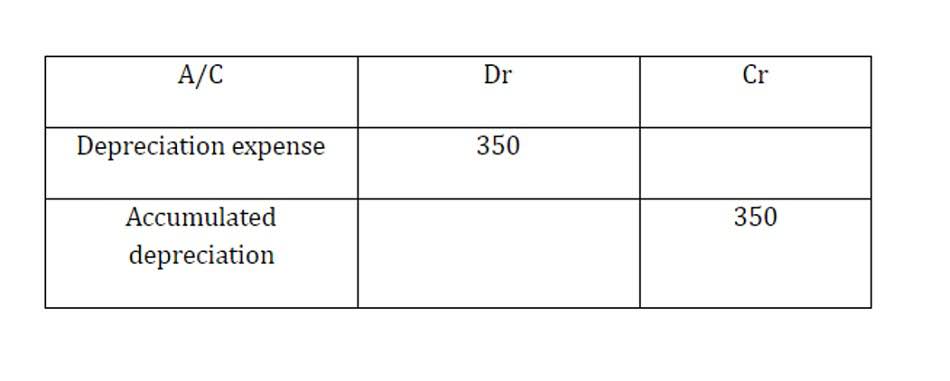
This is because the accounts receivable account is an asset account, and assets are increased by debits. When a business offers discounts to customers for early payment, a sales discount journal entry for account receivable is recorded. This entry reduces the amount of accounts receivable sales journal and recognizes the sales discount expense. Your credit sales journal entry should debit your Accounts Receivable account, which is the amount the customer has charged to their credit. And, you will credit your Sales Tax Payable and Revenue accounts.

How do journal entries for accounts receivable work?
- The six main parts of a sales journal are Data, account Debited, Invoice number, post Reference, Accounts Receivables, and cost of goods sold.
- Just like the purchases journal, only credit sales are recorded when preparing a sales journal.
- A sales journal entry is the same as a revenue journal entry.
- This guide will walk you through everything you need to know about setting up and managing a sales journal, from basic entries to modern digital applications.
- The warehouses are updated constantly, so there is no delay and the company does not run out of product when clients are asking for it.
- The idea behind this is related to getting rid of on-hand inventory.
Therefore, you can browse the journals to view the balances recorded in the general ledger. In addition, you can use the invoice number listed to access a copy of the invoice. A sales journal entry records a cash or credit sale to a customer. It does more than record the total money a business receives from the transaction.
Reduce the accounts receivables workload for your team with a credit control specialist
- The risk of selling on credit is in the notes receivable and notes payable journals.
- This attention to regulatory requirements safeguards your business’s financial integrity.
- In addition, you can use the invoice number listed to access a copy of the invoice.
- Sales are credit journal entries, but they have to be balanced by debit entries to other accounts.
- An accounts receivable journal entry is a critical component of the accounting process for businesses that extend credit to their customers.
Let’s look at an example where the customer paid cash and then changed their mind a few days later. They returned the item to you and received a full refund from you, including taxes. This can be a bit confusing if you’re not an accountant, but you can use this handy cheat sheet to easily remember how the sale journal entry accounts are affected. Finally, if your state or local governments impose a sales tax, then your entry will show an increase in your sales tax liability. These types of entries also show a record of an item leaving your inventory by moving your costs from the inventory account to the cost of goods sold account. But it’s still important to make sure that how is sales tax calculated there’s an accounting record of every sale you make.

Recording Journal Entries for Services
To encourage the buyer to pay before the due date, the seller usually offers a discount. For example, a seller can offer a 2% discount if the buyer pays within ten days of the invoice date. The processing load that the clearing agency or credit card issuing bank pays is about 2-3% of the sales transaction figure.

Double Entry Bookkeeping
Here are a few different types of journal entries you may make for a sale or a return depending on how your customer paid. Let’s review what you need to know about making a sales journal entry. This entry reduces the Accounts Receivable balance and recognizes the loss as a bad debt expense. The allowance for doubtful accounts is a contra-asset account that is used to estimate the amount of accounts receivable that may not be collected. Businesses may also create an allowance for doubtful accounts to estimate the amount of accounts receivable that may not be collected. This allowance is recorded with a debit to Bad Debt Expense and a credit to Allowance for Doubtful Accounts.
- Organizations concerned use columns of the journal according to their needs.
- These entries record the sale of goods or services on account and the corresponding increase in accounts receivable.
- The credit period usually starts from the date of the sale transaction stated on the invoice.
- To create a sales journal entry, you must debit and credit the appropriate accounts.
- For convenient keeping of accounts, maintaining more than one special journal according to the nature of transactions instead of one journal is called classification of the journal.
- While the payment is due at the end of the same month as the month of sale, the terms are written as n/eom (end-of-month).
Chapter 12 – Sales Journal and Sales Return Journal
Therefore, the journal, wherein the transactions which cannot be directly recorded in Bookkeeping for Veterinarians a particular journal are recorded, is called journal proper. To overcome these entire limitations multi-column cash receipts journal is required. In modem age, the introduction of cash receipts journal is in practice in medium and large size business organizations. At the time of selling the seller can sell this commodity granting a 5% trade discount i.e. the buyer gets the benefit to sell the commodity at $95. Trade discount is not recorded in the books of account because it does not bring any financial change of seller or buyer.

Consolidation Warehouse: Definition, Benefits, and Processes
- The system continues to roll over time to form a cycle called the accounting cycle.
- Journal entries for an accounts receivable record are a critical component of the accounting process for businesses that extend credit to their customers.
- Understanding the meaning of each debit and credit can be tricky when you’re dealing with returns.
- It is difficult to find out effects and information relating to the transaction if all the transactions are recorded in a single journal.
- When a business estimates that a certain amount of overdue payments on accounts receivable may not be collected, it creates an allowance for doubtful accounts.
In this respect, the format of the purchase journal under periodic and perpetual systems is the same. Now, let’s say your customer’s $100 purchase is subject to 5% sales tax. When you sell something to a customer who pays in cash, debit your Cash account and credit your Revenue account.
